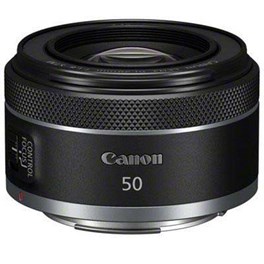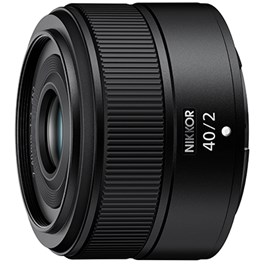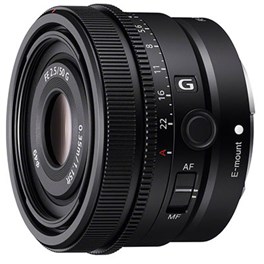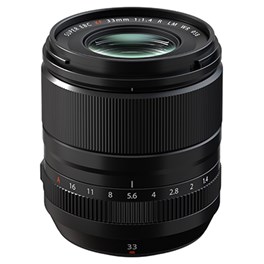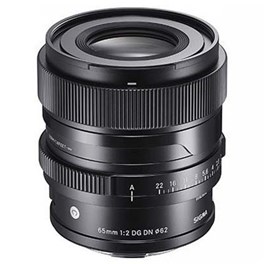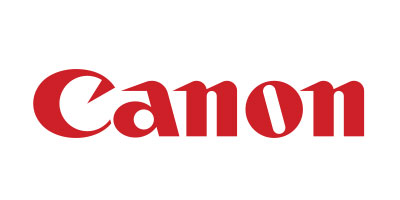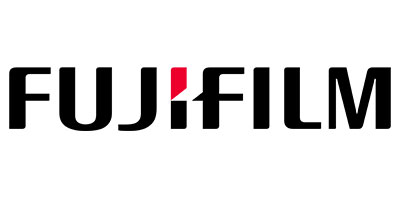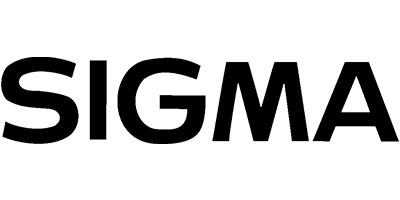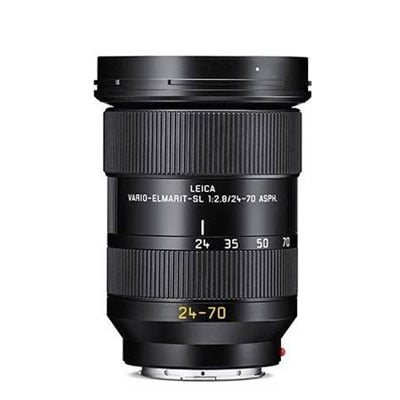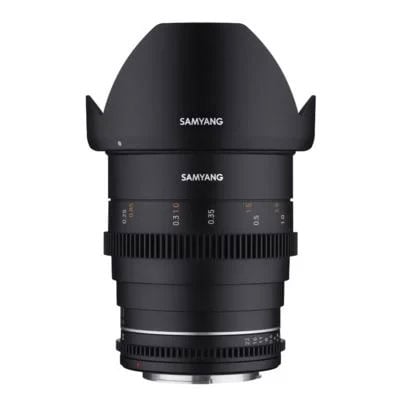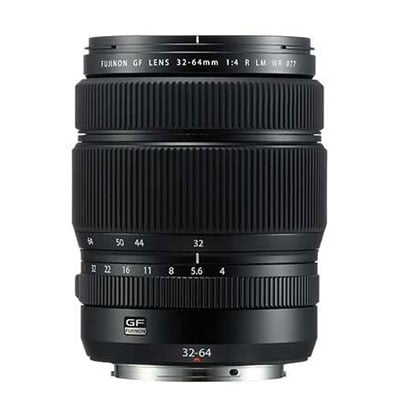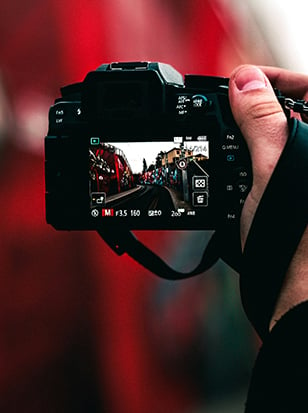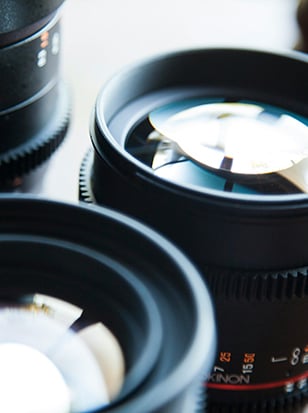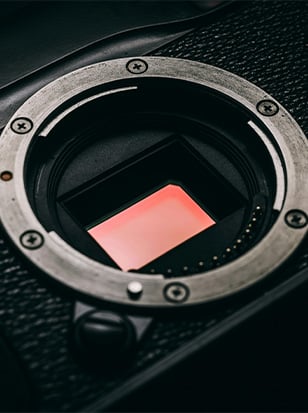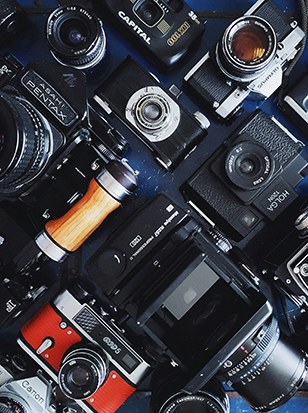
Short, sharp and fast — these are the best lenses for street photography. We’ve scoured all the different popular mounts to pick out our absolute favourite street photography lenses for all the major camera systems. If you want to capture dynamic, brilliant street photography images, these are the lenses that’ll help you do it, for a price you can afford.
What is street photography? In one sense, it’s what it sounds like: photos taken on the city streets. But of course it’s more than that — street photography is about capturing the spontaneity of urban life. It’s about showing people in their everyday environments, documenting chance encounters and fleeting moments.
A good street setup needs to be fast, accurate and ideally fairly inconspicuous. Our team of photo experts has picked out what we reckon are the best street lenses for a range of mounts — scroll down to our ‘How to choose’ section for a detailed breakdown of our criteria. If you’re looking for a camera too, check out our guide to the best mirrorless cameras, which includes plenty of models suitable for street shooting.
Our top picks
|
Aperture: f1.8 maximum Minimum Focus Distance: 30cm Weight: 160g Lens Construction: 6 elements in 5 groups Filter Compatibility: 43mm |
Pros:
Cons:
|
A worthy mirrorless successor to one of the most popular prime lenses ever made, the Canon RF 50mm f1.8 STM Lens sits in the 50mm sweet spot beloved by many street photographers. Commonly referred to as a “nifty fifty”, a 50mm lens delivers a naturalistic perspective by virtue of the fact that it covers roughly the same field of view as a human eye. It’s not wide enough that you need to get super-close to a subject to isolate them, but nor is it so long that the field of view is restrictively narrow. It’s perfect for the kind of shooting where you never know what you might come up against next.
With a plastic construction, the Canon RF 50mm f1.8 STM Lens is a very lightweight lens that doesn’t add much heft at all to an EOS R camera. While there are premium versions of the lens offering greater sharpness (check out the Canon RF 50mm f1.2L USM Lens if you’re interested), this lens is the perfect inexpensive choice for the majority of street shooters.
|
Aperture: f2 maximum Minimum Focus Distance: 29cm Weight: 170g Lens Construction: 6 elements in 4 groups Filter Compatibility: 52mm |
Pros:
Cons:
|
In terms of affordability and portability, it’s tough to beat this doughty little full-frame prime for Z-mount. The Nikon Z 40mm f2 Lens has a slightly wider field of view than the many nifty fifty primes we’ve included on this list, so you’ll likely need to be comfortable getting a little closer to your subjects. However, your reward is a splendid lens with its own distinctive look, bolstered by its pleasing bokeh quality and top-notch ability to vividly separate subject and background for images that really pop.
One of the more affordable lenses in the Nikon Z stable, this lightweight lens is a perfect choice for always having in your kit bag, ready for an impromptu bit of street shooting. It pairs beautifully with full-frame Nikon Z cameras like the Nikon Z5, and its stepping motor delivers excellent autofocusing performance in all situations – even when the light gets low.
|
Aperture: f1.4 maximum Minimum Focus Distance: 30cm Weight: 755g Lens Construction: 13 elements in 11 groups Filter Compatibility: 67mm |
Pros:
Cons:
|
If you’re shooting the street on a DSLR, the Sigma 35mm f1.4 DG HSM Art is one of the best investments you can make in our view. Available for Canon EF and Nikon F mounts, this affordable lens delivers beautiful, expressive image quality at 50mm. Its bokeh quality is sublime, with crisp separation of subject and background when working at shallow depths of field. It also handles backlit situations very well, with minimal flare. With an F1.4 maximum aperture, the Art lens is well-equipped to handle low-light situations — really, it’ll handle just about anything you throw at it. At 35mm, it’s a slightly wider focal length than many we’ve listed here, but many street photographers prefer having room to fit a bit more in the scene.
There’s not a lot we can say against this lens, especially at its price point. It’s quite big and heavy, but this is pretty much unavoidable for the large aperture and optical quality on offer here, and since you’re using a larger DSLR anyway, this probably won’t be much of an issue. And remember, both Canon and Nikon offer adapters between their DSLR and mirrorless lens mounts, so you can keep on using this brilliant lens even if you later decide to switch systems.
|
Aperture: f2.5 maximum Minimum Focus Distance: 35cm Weight: 174g Lens Construction: 9 elements in 9 groups Filter Compatibility: 49mm |
Pros:
Cons:
|
This lens may seem unusual at first glance – why is its aperture narrower than similar 50mm lenses, which tend to offer maximum apertures around the f1.8 or f1.4 mark? However, once you dig into the specs of the Sony FE 50mm f2.5 G Lens it starts to make sense – there was no other way to deliver a lens this sharp and this compact. Even when shooting wide open, the Sony FE 50mm f2.5 G delivers tack-sharp images, and its autofocusing is absolutely first rate thanks to the dual linear AF motors.
All this makes it perfectly pitched for a lightweight street photography setup – and if you’re using an APS-C E-mount camera like the A6700, the equivalent focal length of 75mm is still definitely workable for street shots. Even with a narrower aperture, the bokeh quality delivered by the lens is excellent, and it makes for a truly fun and expressive lens to shoot with. There’s built-in stabilisation technology to help with shooting handheld at slower shutter speeds, and the optical construction ensures edge-to-edge sharpness.
|
Aperture: f1.4 maximum Minimum Focus Distance: 30cm Weight: 360g Lens Construction: 15 elements in 10 groups Filter Compatibility: 58mm |
Pros:
Cons:
|
With an equivalent focal length of 50mm, the Fujifilm XF 33mm f1.4 R LM WR is a classic street lens, and pairs beautifully with any mirrorless X-mount camera. Its large maximum aperture gives you lots of latitude for creating images with dramatic bokeh – this is a lens that loves to be shot wide open, so don’t be afraid to twist that aperture ring and go to town. It’s sharp from edge to edge, and the “WR” in the name denotes weather resistance, so don’t be afraid to take it out in the rain.
We might have liked to see fluorine coating to protect the element from smudges – you’ll want to be doubly sure not to plant a greasy thumbprint on there. It’s also worth noting that the lens is prone to exhibiting flare when shooting into the light. Some street photographers like this effect, but if it’s not something you want, make sure to change up your shooting position.
|
Aperture: f2 maximum Minimum Focus Distance: 55cm Weight: 405g Lens Construction: 12 elements in 9 groups Filter Compatibility: 62mm |
Pros:
Cons:
|
Sigma’s “I” series of lenses stand out from the pack. Coming in slightly unusual focal lengths, they place an emphasis on individuality and character, and as such are ideal for street photography, where expression and creativity are often prized over technical perfection. The Sigma 65mm f2 DG DN I C Lent is a fantastic choice, available for Sony FE mount and the L-mount alliance, meaning it’ll fit Panasonic Lumix S full-frame cameras and certain Leica cameras.
At 65mm, this lens is longer than a standard nifty-fifty, but not quite as narrow as an 85mm portrait lens, and provides an interestingly different field of view for street shooting. You can maintain a little more distance from your subjects, and isolate specific elements in a scene more easily. While the aperture tops out at f2 – a little narrow for a prime, but a measure that keeps the size and cost of the lens down – the bokeh quality is excellent thanks to the nine-bladed aperture.
|
Aperture: f1.2 maximum Minimum Focus Distance: 30cm Weight: 410g Lens Construction: 19 elements in 14 groups Filter Compatibility: 62mm |
Pros:
Cons:
|
This premium prime is just a downright enjoyable lens to use. Its stated focal length of 25mm delivers an equivalent focal length of 50mm when mounted to a Micro Four Thirds camera. That’s right, it’s another nifty-fifty, and frankly, when a lens is this good that’s no bad thing. The premium optics in the Olympus M.Zuiko Digital ED 25mm f1.2 PRO Lens deliver sharpness right into the edges of the image, and it has also been built to withstand the rigours of outdoor use. Autofocus is reliably fast, and having f1.2 is a real asset.
Of course, the large aperture also necessitates a heavier build – at 410g the lens isn’t exactly a brick, but will still create something of a front-heavy effect when mounted to one of the lighter MFT cameras. You’ll also be likely at the upper end of your budget with this one – but if you can stretch to it, we recommend this lens without hesitation.

How to choose the best lens for street photography
Almost any lens can be a good street lens if used correctly, so as you’d imagine, there’s plenty of choice. Below, we’ve listed some of the key specs to think about when selecting a street photography lens.
Prime or zoom? This is the big question you’ll want to answer before honing in on your street lens – do I want to shoot with a prime or a zoom? There’s no right or wrong answer here, as both have their advantages. Zoom lenses give you plenty of flexibility, and allow you to get precise with your framing without having to change position (which can attract attention).
Primes, however, are generally favoured for street photography, as you can tell by a glance through our list above. Prime lenses provide superior sharpness and optical quality, and also generally have larger maximum apertures, which is handy once light levels fall, and means you can use faster shutter speeds to freeze fleeting moments. Some photographers also feel that prime lenses improve your thinking as a shooter, encouraging you to work with your focal length and move your feet, rather than compensating with a zoom.
Size and build - Ideally, you want your street setup to be slim and unobtrusive, meaning it doesn’t attract too much attention – though with that said, a longer telephoto focal length can be useful for maintaining distance. Also, street shooting is mainly an outdoor pursuit, so a lens with a good level of weatherproofing is an asset.
Affordability - At heart, street shooting is one of the most accessible and fun disciplines in all of photography. All that’s really required is you, a camera and a place to shoot. So with that in mind, while there are plenty of premium professional lenses out there that would make for fantastic street-shooting options, we’ve kept this guide to lenses that are broadly affordable for all users.
Speed - A good street photographer needs to be reactive, and so a good street lens will ideally have a fast autofocus system capable of locking onto a subject efficiently. Though with that said, street photography is an old practice, and many of its finest practitioners like Henri Cartier-Bresson or Vivian Maier had no choice but to work exclusively with manual focus. So while speedy focusing is useful, it’s by no means essential.
FAQs
What type of lens is best for street photography?
A prime lens with a focal length between 35mm and 50mm is considered ideal for street photography. It allows you to capture a wider view of the scene while maintaining a natural perspective.
Should I go for a fast or slow lens for street photography?
A fast lens with a wide maximum aperture is preferred for street photography, as it allows you to shoot in low light and create a shallow depth of field for selective focus. A minimum aperture of f1.8 is recommended for those low light conditions and for creating bokeh.
Is image stabilisation necessary for a street photography lens?
Image stabilisation can be helpful for street photography, but it's not necessary. If you shoot at a faster shutter speed and keep your hands steady, you can capture sharp images without image stabilisation.
Should I choose a zoom or prime lens for street photography?
Prime lenses are typically preferred for street photography because they are often faster and sharper than zoom lenses. Additionally, they tend to be smaller and lighter, making them easier to carry around.
Can I use a lens with a longer focal length for street photography?
While you can use a lens with a longer focal length for street photography, it can be more challenging as it may require you to stand farther away from your subject. Longer lenses also tend to be heavier and larger, making them less portable.
Looking for something else?
How do we decide?
Our in-house photography experts, store staff and partners all work collaboratively to pour over our guides and tips articles. We also consider emerging trends and customer feedback to make sure our guides are always up-to-date and reflective of what people are truly looking for. By curating only the best products, our guides provide trustworthy recommendations, making it easier for customers to make informed choices with confidence.
If you would like more advice on any purchase our contact centre staff are here to help. Alternatively, you can reach us via email or social media. And don't forget. If you were to purchase anything based on our recommendations you'll be covered by our full returns policy
Sign up for our newsletter today!
- Subscribe for exclusive discounts and special offers
- Receive our monthly content roundups
- Get the latest news and know-how from our experts

